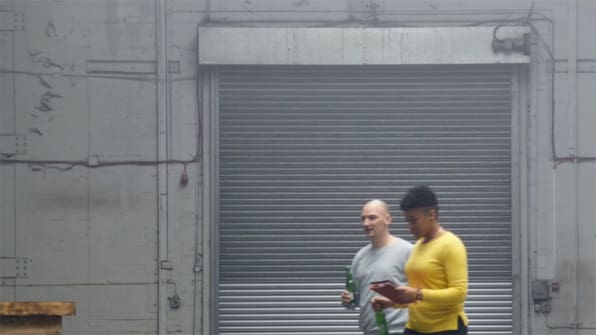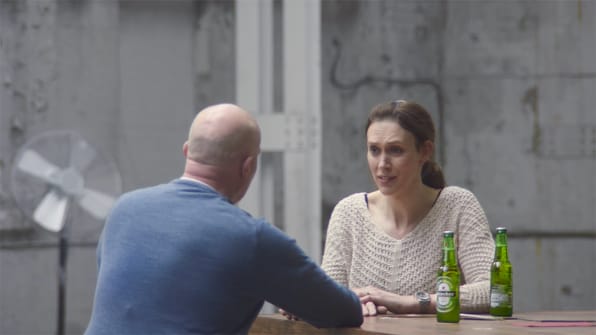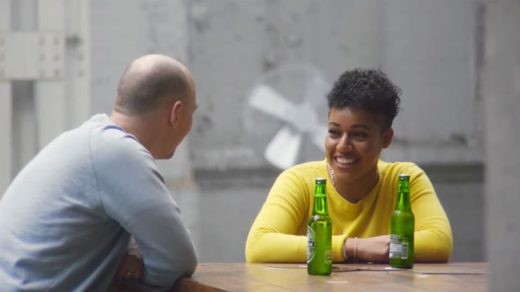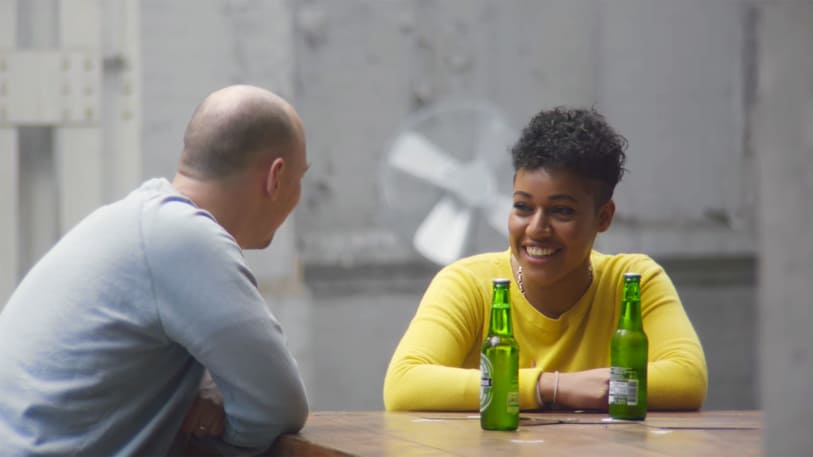Here’s How Heineken Made That Awesome Antidote To Pepsi’s Kendall Jenner Ad
You’ve seen the ad already, right? If not, please take a moment to acquaint yourself.
We’ve already gushed about it as the perfect counterpoint to Pepsi’s tone-deaf take on social conscience but still wondered how the brand, along with creative and PR partners Publicis London and Edelman, pulled it off.
We emailed with Heineken’s UK Marketing Director Cindy Tervoort about the ad, how the idea came about, the insight behind it, and the biggest challenge making it happen.

Fast Company: How did the idea for Worlds Apart/#OpenYourWorld come about?
Cindy Tervoort: Heineken wanted to bring meaning to its value of openness. It’s been a process of about six months to deliver this campaign, and it began with the realization that perhaps we’re not as open as we all think. We’ve got used to only hearing views that are the same as our own in our cozy echo-chambers, and that results in people becoming more polarized and divided. At times we’re all guilty of labeling people based on their views, rather than understanding the person. Heineken wanted to challenge this. As a brand whose end line is ‘Open Your World’, we wanted to not just say we believe in openness, but seek to prove that even the most divided people can open up when they find something that connects them.
But we also wanted some science to prove when we connect with one another we become more open and it’s a good thing, so we turned to Dr. Chris Brauer of Goldsmiths University, a leading expert in human behavior at Goldsmiths University. He says the absolute core of common ground is truly hearing the interests and concerns of another person, openly and without judgment.

FC: What was the most significant consumer insight that’s reflected in the work?
CT: There is more that unites than divides us. Despite our differences, we can always find something that connects us. The simple act of sitting down and having a conversation can be the first step to opening up and overcoming our prejudices. It is better to engage, rather than to pretend our differences don’t exist.
This insight led us to partner with The Human Library, a unique not-for-profit organization that uses conversation to challenge stereotypes. Every ‘book’ in The Human Library is a real person with an extraordinary background–from street sleepers and refugees to transgender and people with life-changing illnesses. Each ‘book’ can be loaned out for a conversation with someone you may not otherwise engage with.
With this campaign, we feel it important to not just be saying but doing. Through our Human Library partnership, we will be bringing people together to overcome prejudices through a series of events which will happen in the UK later in the year.

FC: What was the biggest creative challenge in getting it done?
CT: Getting the right participants was crucial. We wanted to find people who had strong opinions that they felt passionately about from both sides of the argument.
But it was also vital that they had no idea what the experiment would involve, or why we had chosen them–no easy task. We spent two months searching through varying methods (a press and web search, internet forums and chatrooms, approaching specific bodies or organizations, local groups, communities) and simply interviewed them to get to know them. As they stepped into that warehouse that was the first time they even realized the experiment would be with someone else.

FC: Were you confident the subjects would get along in the end? Were there any cut out?
CT: We designed the experiment together with Dr. Govinda Clayton, a conflict resolution specialist, but regardless of planning it’s always a gamble when you film an unrehearsed and unscripted piece like this. You never know what you’re going to get. The only control we had was some written instructions for the pairs to follow and the occasional guidance from the director on a loud speaker if they got stuck on a task. So you can imagine when each pair met each other for the first time, we all had our noses pressed to the monitors to see what would happen. We were confident though that when you give people the chance to get to know each other without seeing only a label, everyone can connect.
We filmed nine pairings in total, and three were made into the film. But all of the pairings were amazing to watch, so we’ll be creating some new films with a few of those pairings to be shown too.
(27)



